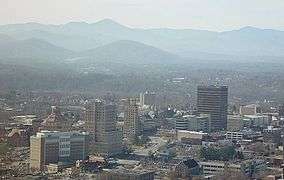Demographics of North Carolina
| Historical population | |||
|---|---|---|---|
| Census | Pop. | %± | |
| 1790 | 393,751 | — | |
| 1800 | 478,103 | 21.4% | |
| 1810 | 556,526 | 16.4% | |
| 1820 | 638,829 | 14.8% | |
| 1830 | 737,987 | 15.5% | |
| 1840 | 753,419 | 2.1% | |
| 1850 | 869,039 | 15.3% | |
| 1860 | 992,622 | 14.2% | |
| 1870 | 1,071,361 | 7.9% | |
| 1880 | 1,399,750 | 30.7% | |
| 1890 | 1,617,949 | 15.6% | |
| 1900 | 1,893,810 | 17.1% | |
| 1910 | 2,206,287 | 16.5% | |
| 1920 | 2,559,123 | 16.0% | |
| 1930 | 3,170,276 | 23.9% | |
| 1940 | 3,571,623 | 12.7% | |
| 1950 | 4,061,929 | 13.7% | |
| 1960 | 4,556,155 | 12.2% | |
| 1970 | 5,082,059 | 11.5% | |
| 1980 | 5,881,766 | 15.7% | |
| 1990 | 6,628,637 | 12.7% | |
| 2000 | 8,049,313 | 21.4% | |
| 2010 | 9,535,483 | 18.5% | |
| Est. 2014 | 9,943,117 | 4.3% | |
| Source: 1910-2010[1] | |||
Demographics of North Carolina covers the varieties of ethnic groups who reside in North Carolina and relevant trends.
Center of population
Center of Population in between Seagrove and Cheeks, North Carolina

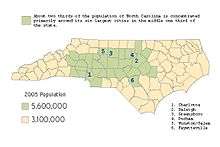

The United States Census Bureau, as of July 1, 2009, estimated North Carolina's population at 9,380,884[3] which represents an increase of 1,340,334, or 16.7%, since the last census in 2000.[4] This exceeds the rate of growth for the United States as a whole. The growth comprises a natural increase since the last census of 412,906 people (that is 1,015,065 births minus 602,159 deaths) and an increase due to net migration of 783,382 people into the state.[4] Immigration from outside the United States resulted in a net increase of 192,099 people, and migration within the country produced a net gain of 591,283 people.[4] Between 2005 and 2006, North Carolina passed New Jersey to become the 10th most populous state.[5] The state's population reported as under 5 years old was 6.7%, 24.4% were under 18, and 12.0% were 65 or older. Females made up approximately 51% of the population.
Metropolitan areas
North Carolina has three major Metropolitan Combined Statistical Areas with populations of more than 1 million (U.S. Census Bureau 2010 estimates):[6]
- The Metrolina: Charlotte-Gastonia-Salisbury, North Carolina-South Carolina - population 2,402,623
- The Triangle: Raleigh-Durham-Cary-Chapel Hill, North Carolina - population 1,749,525
- The Piedmont Triad: Greensboro—Winston-Salem—High Point, North Carolina - population 1,589.200
North Carolina has nine municipalities with populations of more than 100,000, with 16 municipalities with populations over 50,000 (U.S. Census Bureau 2010 figures):[7]
- Charlotte: Mecklenburg County - population 731,424
- Raleigh: Wake County - population 403,892
- Greensboro: Guilford County - population 269,666
- Winston-Salem: Forsyth County - population 229,617
- Durham: Durham County - population 228,330
- Fayetteville: Cumberland County - population 200,564
- Cary: Wake County - population 135,234
- High Point: Guilford County - population 104,371
- Wilmington: New Hanover County - population 106,456
Officially, as drawn from verified US Census Department Statistics, the 15 largest cities in North Carolina are:
1 Charlotte: Mecklenburg County - population 731,424
2 Raleigh: Wake County - population 403,892
3 Greensboro: Guilford County - population 269,666
4 Winston-Salem: Forsyth County - population 229,617
5 Durham: Durham County - population 228,330
6 Fayetteville: Cumberland County - population 200,564
7 Cary: Wake County - population 135,234
8 Wilmington: New Hanover County - population 106,476
9 High Point: Guilford County - population 104,371
10 Greenville: Pitt County - population 86,017
11 Asheville: Buncombe County - population 83,393
12 Concord: Cabarrus County - population 79,066
13 Gastonia: Gaston County - population 71,059
14 Jacksonville: Onslow County - population 70,145
15 Rocky Mount: Edgecombe and Nash Counties - population 57,477
These figures may have been invalidated by local estimates, chamber of commerce estimates, or other unofficial sources.
Racial Makeup and Population Trends
| By race | White | Black | AIAN* | Asian | NHPI* |
|---|---|---|---|---|---|
| 2000 (total population) | 75.27% | 22.20% | 1.65% | 1.70% | 0.11% |
| 2000 (Hispanic only) | 4.28% | 0.33% | 0.10% | 0.05% | 0.03% |
| 2005 (total population) | 74.95% | 22.29% | 1.65% | 2.06% | 0.12% |
| 2005 (Hispanic only) | 5.89% | 0.37% | 0.12% | 0.05% | 0.03% |
| Growth 2000–05 (total population) | 7.41% | 8.31% | 7.51% | 30.62% | 17.92% |
| Growth 2000–05 (non-Hispanic only) | 4.93% | 8.13% | 6.31% | 30.71% | 16.84% |
| Growth 2000–05 (Hispanic only) | 48.62% | 20.36% | 25.79% | 27.15% | 21.63% |
| * AIAN is American Indian or Alaskan Native; NHPI is Native Hawaiian or Pacific Islander | |||||
As of the 2015 vintage year of the U.S. Census series starting in 2010, the U.S. Census estimated that the racial distribution of North Carolina's population was 71.2% White American, 22.1% African American, 1.6% American Indian, 2.8% Asian, and 9.1% Hispanic or Latino (of any race.[8] North Carolina has historically been a rural state, with most of the population living on farms or in small towns. However, over the last 30 years the state has undergone rapid urbanization, and today most of North Carolina's residents live in urban and suburban areas, as is the case in most of the United States. In particular, the cities of Charlotte and Raleigh have become major urban centers, with large, diverse, mainly affluent and rapidly growing populations. Most of this growth in diversity has been fueled by immigrants from Latin America, India, and Southeast Asia.[9]
In addition, large numbers of people from the Northeastern United States, Florida and California have moved to the state in recent years. North Carolina was one of the country's fastest growing states in the 1980s and 1990s. The growth rate subsided in the first decade of the 21st century due to changed economic conditions, but it continued to attract new residents.
The center of population of North Carolina is located in Randolph County, in the town of Seagrove.[10]
| Ancestry | Percentage | Main article: |
|---|---|---|
| African | (21.6%) Of Total) | See African American |
| American | (13.9%) | See United States |
| English | (9.5%) | See English American |
| German | (9.5%) | See German American |
| Irish | (7.4%) | See Irish American |
| Scots-Irish | (3.2%) | See Scots-Irish American |
| Italian | (2.3%) | See Italian American |
| Scottish | (2.2%) | See Scottish American |
| County | Seat | 2010 Projection[11] |
|---|---|---|
| Mecklenburg | Charlotte | 925,084 |
| Wake | Raleigh | 900,072 |
| Guilford | Greensboro | 474,605 |
| Forsyth | Winston-Salem | 350,784 |
| Cumberland | Fayetteville | 311,777 |
| Durham | Durham | 262,256 |
| Buncombe | Asheville | 234,697 |
| Gaston | Gastonia | 205,489 |
| Union | Monroe | 203,527 |
| New Hanover | Wilmington | 200,401 |
African Americans
African Americans make up nearly a quarter of North Carolina's population. The number of middle-class blacks has increased since the 1970s. African Americans are concentrated in the state's eastern Coastal Plain and in parts of the Piedmont Plateau, where they had historically worked and where the most new job opportunities are. African-American communities number by the hundreds in rural counties in the south-central and northeast, and in predominantly black neighborhoods in the cities: Charlotte, Raleigh, Durham, Greensboro, Fayetteville, Wilmington and Winston-Salem.
Until the mid-1820s, North Carolina had more small farms and fewer plantations than adjacent South Carolina and Virginia. These "yeoman" farmers were non-slave-holding (or owning few slaves), private land owners of tracts of approximately 500 acres (2 km²) or less. Relatively few blacks live in the state's mountains and rural areas of the western Piedmont. In some mountain counties, the black population has historically numbered in the few dozens at most.
Free African Americans migrated in the colonial and post-Revolutionary period to frontier areas of North Carolina from Virginia. Detailed family histories of 80% of those counted as "all other free persons" in the 1790-1810 federal census show they were descendants of African Americans free in Virginia during the colonial period. As boundaries were then more permeable, most free African families descended from unions between white women, free or servant, and African men, free, servant or slave. Indians who adopted English customs became part of free African American communities and married into the families. Some of the lighter-skinned descendants formed their own distinct communities, often identifying themselves as Indian or Portuguese to escape effects of the color line.[12]
Asian Americans
The state has a rapidly growing proportion of Asian Americans, specifically Indian and Vietnamese; these groups nearly quintupled and tripled, respectively, between 1990 and 2002, as people arrived in the state for new jobs in the growing economy. Recent estimates suggest that the state's Asian-American population has increased significantly since 2000. Indian Americans are one of the most highly educated groups in the US.
North Carolina has the largest population of Montagnards, perhaps 10,000, living in the US. These refugees originate from the Central Highlands of Vietnam. The first group arrived in 1986 as former fighters allied with US Special Forces during the Vietnam War. Today, most of the population lives in Charlotte, Raleigh and especially, Greensboro. Until the 2010 Census, their number has never been accurately identified or counted.
Events during the 1980s in Laos spurred Hmong immigration to North Carolina, as refugees fled wars and communist rule. They now number 12,000 in the state.[13] A small Hmong farming colony can be found near Marion.
The earliest record of Asian immigration to North Carolina goes back to the mid-19th century when the first Chinese were hired as miners and agricultural workers. The famous Thai "Siamese" twins - Eng and Chang Bunker - conjoined together at their chests, settled in Mt Airy, North Carolina in 1839. Smaller numbers of Japanese, Filipinos, and Koreans arrived to work as farmers, but many also worked in the Atlantic fishing industries in the early and mid-20th century.
European Americans
Settled first, the coastal region attracted primarily English immigrants of the early migrations, including indentured servants transported to the colonies and descendants of English who migrated from Virginia. In addition, there were waves of Protestant European immigration, including the British, Irish, French Huguenots,[14] and Swiss Germans who settled New Bern. A concentration of Welsh (usually included with others from Britain and Ireland) settled east of present Fayetteville in the 18th century. For a long time the wealthier, educated planters of the coastal region dominated state government.
Colonial British
North Carolinians of Scots-Irish, Scottish and English ancestry are spread across the state. Historically Scots–Irish and Northern English settled mostly in the Piedmont and backcountry. They were the last and most numerous of the immigrant groups from the Britain and Ireland before the Revolution, and settled throughout the Appalachian South, where they could continue their own culture.[15] They were fiercely independent and mostly yeoman farmers.
Eastern European
In the Winston-Salem area, there is a substantial population of ethnic German ancestry (from the modern area of the Czech Republic), descended from immigration of members of the Protestant Moravian Church during the mid-18th century. The Moravians of Winston-Salem are not primarily of Czech ancestry, but mostly of German descent, and members of the Moravian Church in America, a Protestant denomination takes its name from a spiritual movement that began in 15th century Moravia and nearby Bohemia. North Carolina is home to more than 10,000 Bosnian Americans.[16] The Greeks have been around since the early 20th century with 7 Greek Orthodox churches in NC. During the early 20th century, a small group of Orthodox immigrants from Ukraine settled in Pender County.[17]
Southern European
There is somewhat of a long history of Portuguese settlement along the state's Atlantic coast whose families were fishermen originated from the Azores islands and the country of Portugal, and there are over 50,000 residents of Portuguese descent. Also the North Carolina coast attracted Basque fishermen from their homeland in Northern Spain and southwest France. The seasonal residents known as "snowbirds" the majority are Canadians either English and French speaking live in coastal sections and beach towns every winter.
Hispanics and Latinos
Since 1990 the state has seen an increase in the number of Hispanics/Latinos. Once chiefly employed as migrant labor, Hispanic residents of the 1990s and early 21st century have been attracted to low-skilled jobs that are the first step on the economic ladder. As a result, growing numbers of Hispanic immigrants are settling in the state, majority of which is from Mexico, but also from Puerto Rico, and to a lesser degree from other Caribbean and Central American countries. There are also significant amounts of Hispanics moving to North Carolina from other states, such as Puerto Ricans from the Northeast. In Hispanic neighborhoods such as Eastland in Charlotte, Mexican Americans have become the ethnic majority. Newly formed barrios in the Raleigh area continue a transplanted Latin American culture. In 2005, the Pew Hispanic Center estimated that 300,000 — roughly 65 percent of North Carolina's Latino population — are illegal immigrants, based on the Census Bureau's population estimates.[18] The population has grown from 77,726 in 1990 to 517,617 in 2005, an average increase of 13.5% per year.[18]
Native Americans
North Carolina has the highest American Indian population in the East Coast. The estimated population figures for Native Americans in North Carolina (as of 2004) is 110,198. To date, North Carolina recognizes eight Native American tribal nations within its state borders:[19]
- The Eastern Band of Cherokee Indians were federally recognized in 1868 and received state recognition in 1889. The Eastern Cherokee live in eastern Swain County, as well as Graham and Jackson counties, and have roughly 13,400 enrolled members, most of whom live on a reservation properly called the Qualla Boundary. The Reservation is slightly more than 56,000 acres (230 km²), and is held in trust by the federal government specifically for the Eastern Band of Cherokee Indians.
- The Lumbee tribe, the largest in the state with 54,000 members, was recognized by the state in 1885. In 1956, Congress recognized the Lumbee but denied them benefits received by other federally recognized tribes. Since the 1980s, the Lumbee have been seeking full federal recognition. The Lumbee are concentrated chiefly in the southeastern portions of the state in Robeson, Scotland, Hoke and Cumberland counties.
- The Haliwa-Saponi Tribe of Native Americans received state recognition in 1965. The tribe comprises a little more than 3,800 enrolled members who reside in northeastern North Carolina's Halifax and Warren counties.
- The Waccamaw Siouan Indian Tribe received state recognition in 1971. The almost 2,000 members are located in the mid-Atlantic North Carolina counties of Bladen, and Columbus.
- The Coharie Tribe first received state recognition in 1911. North Carolina rescinded recognition in 1913 but formally recognized the tribe in 1971. The population of 1,781 enrolled members is located in Sampson and Harnett counties.
- The Sappony received state recognition in 1911 as the Indians of Person County. In 2003 they officially received state permission to change their name to the Sappony Tribe. They have 850 enrolled members.
- The Occaneechi Band of the Saponi Nation received state recognition in 2002. They have a population of 800 members who reside in Orange and Alamance counties.
- The Meherrin are a tribe of Iroquoian-descent located primarily in rural northeastern Hertford, Bertie, and Gates counties, with a population of 557 enrolled members.
Furthermore, though they are not state-recognized, Robeson County has a significant number of descendants of the Tuscarora, who are currently attempting to gain state recognition. Only five states: (California, Arizona, Oklahoma, New Mexico, and Texas), have larger Native American populations than North Carolina.[20] The total Native American and Alaska Native population in the United States is 2,824,751, or 0.95% of the total.
Languages
As of 2010, 89.66% (7,750,904) of North Carolina residents age 5 and older spoke English at home as a primary language, while 6.93% (598,756) spoke Spanish, 0.32% (27,310) French, 0.27% (23,204) German, and Chinese (which includes Mandarin) was spoken as a main language by 0.27% (23,072) of the population over the age of five. In total, 10.34% (893,735) of North Carolina's population age 5 and older spoke a mother language other than English.[21]
| Language | Percentage of population (as of 2010)[21] |
|---|---|
| Spanish | 6.93% |
| French | 0.32% |
| German and Chinese (including Mandarin) (tied) | 0.27% |
| Vietnamese | 0.24% |
| Arabic | 0.17% |
| Korean | 0.16% |
| Tagalog | 0.13% |
| Hindi | 0.12% |
| Gujarati, Russian, and Hmong (tied) | 0.11% |
| Italian and Japanese (tied) | 0.08% |
Religion
North Carolina, like other Southern states, has traditionally been overwhelmingly Protestant. By the late 19th century, the largest Protestant denomination was the Southern Baptists. However, the rapid influx of northerners and immigrants from Latin America is steadily increasing the number of Roman Catholics and Jews in the state. The Baptists remain the single largest church in the state, however.
The growing diversity of religious groups in North Carolina is most visible in the state's larger urban areas, such as Charlotte and Raleigh-Durham. It is in these cities and suburbs that most of the state's new immigrants and residents have settled. However, in many rural counties the Southern Baptists remain the dominant Christian church. The second-largest Protestant church in North Carolina are the Methodists, who are strong in the northern Piedmont, and especially in populous Guilford County. There are also substantial numbers of Quakers in Guilford County, and northeastern North Carolina.
The Presbyterians, historically Scots-Irish, have had a strong presence in Charlotte, the state's largest city, and in Scotland County.
Jews began arriving in North Carolina in the early to mid-19th century. Primarily German Jews, these early merchants established centers in the coastal cities of Wilmington and New Bern. It was not until the late 19th to early 20th century, however, that Eastern European Jews began to arrive in large numbers to Piedmont cities such as Charlotte and Greensboro. Today, most Jewish communities in North Carolina are centered around large Piedmont cities such as Charlotte, Raleigh, Greensboro, and Winston-Salem. In recent years, Western North Carolina has also seen an influx of Jews, who have relocated to places such as Asheville and Boone from Florida and the Northeast. It is estimated there are approximately 30,000 Jewish residents in North Carolina, which constitute around 0.3% of the state's population.
The religious affiliations of the people of North Carolina, as of 2001, are shown below:[22]
- Christian: 79%
- Protestant: 57%
- Baptist: 38%
- Methodist: 9%
- Presbyterian: 3%
- Lutheran: 2%
- Other Protestant: 5%
- Roman Catholic: 10%
- Other Christian such as Non-denominational, Pentecostal, and the LDS Church: 12%
- Protestant: 57%
- Judaism: 1%
- Other religions: 3%
- Non-religious: 10%
- Refused to answer: 7%
References
- ↑ http://2010.census.gov/2010census/data/apportionment-pop-text.php
- ↑ http://merlot.caliper.com/maptitude/census2000maps/map.asp?command=find&map_option=loc_only&map=7&state=NC&city=&SUBMIT=Find
- ↑ "Apportionment Population and Number of Representatives, by State: 2010 Census" (PDF). United States Census Bureau. Retrieved 2010-12-22.
- 1 2 3 U. S. Census Bureau (2008-12-15). "Cumulative Estimates of the Components of Population Change for the United States, Regions and States: April 1, 2000 to July 1, 2008 (NST-EST2008-04)" (CSV). Retrieved 2009-01-16.
- ↑ Table 1: Estimates of Population Change for the United States and States, and for Puerto Rico and State Rankings: July 1, 2005 to July 1, 2006. United States Census Bureau. December 22, 2006. Retrieved December 22, 2006.
- ↑ "Table 2: Annual Estimates of the Population of Combined Statistical Areas: April 1, 2000 to July 1, 2008" (CSV). 2008 Population Estimates. United States Census Bureau, Population Division. July 1, 2008. Retrieved July 2, 2009.
- ↑ "Table 1: Annual Estimates of the Population for Incorporated Places Over 100,000, Ranked by July 1, 2008 Population: April 1, 2000 to July 1, 2008" (CSV). 2010 Population Estimates. United States Census Bureau, Population Division. July 1, 2008. Retrieved July 2, 2009.
- ↑ http://www.census.gov/quickfacts/table/PST045215/37
- ↑ "Contemporary Migration in North Carolina" (PDF).
- ↑ "State Centers".
- ↑ "County Population Growth 2010 - 2020". North Carolina State Demographics. Archived from the original on 2008-02-16. Retrieved 2008-02-23.
- ↑ Paul Heinegg, Free African Americans of Virginia, North Carolina, South Carolina, Maryland and Delaware
- ↑ See a report on immigration by The Center for New North Carolinians of the University of North Carolina, Greensboro, entitled Ethnic Groups in North Carolina. Retrieved July 29, 2007.
- ↑ North Carolina-Colonization-The Southern Colonies
- ↑ David Hackett Fischer, Albion's Seed: Four British Folkways in America, New York: Oxford University Press, 1989, pp.632-639
- ↑ Bosnia and Herzegovina Tribute Day
- ↑ Amanda Greene, "Small Group Fights to Save Historic Orthodox Church," Greensboro News and Record, 17 December 2007
- 1 2 Martinez, Rick (2005-12-12). "Immigration Hits 'Critical Mass' in NC". Carolina Journal. Retrieved 2007-01-04.
- ↑ "Tribes and Organizations". North Carolina Department of Administration. Retrieved 2008-02-23.
- ↑ "State Rankings -- Statistical Abstract of the United States". U.S. Census Bureau. July 2004. Retrieved 2006-12-17.
- 1 2 "North Carolina". Modern Language Association. Retrieved August 16, 2013.
- ↑ "American Religious Identification Survey". Exhibit 15. The Graduate Center, City University of New York. Retrieved 2009-01-09.
.jpg)
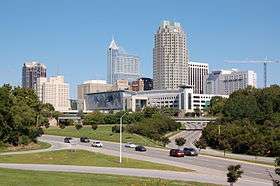
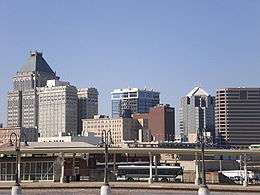

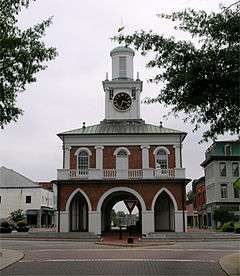

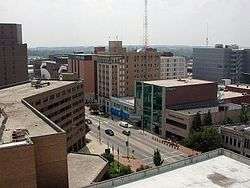
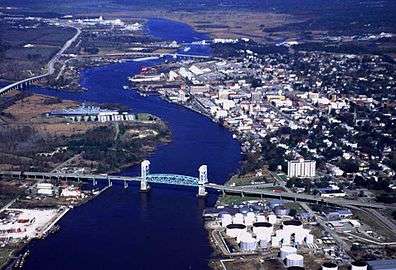
.jpg)


